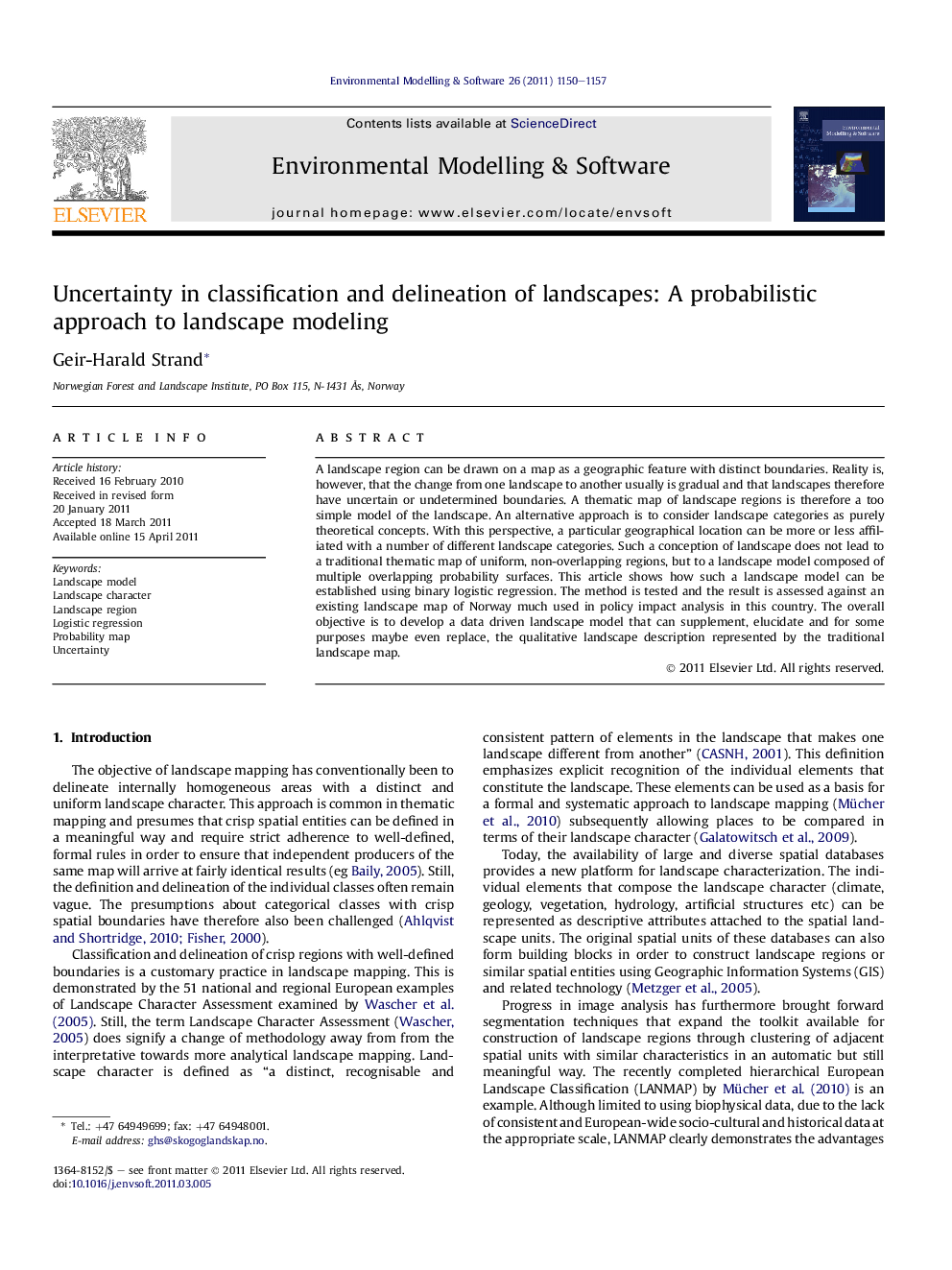| Article ID | Journal | Published Year | Pages | File Type |
|---|---|---|---|---|
| 10370783 | Environmental Modelling & Software | 2011 | 8 Pages |
Abstract
A landscape region can be drawn on a map as a geographic feature with distinct boundaries. Reality is, however, that the change from one landscape to another usually is gradual and that landscapes therefore have uncertain or undetermined boundaries. A thematic map of landscape regions is therefore a too simple model of the landscape. An alternative approach is to consider landscape categories as purely theoretical concepts. With this perspective, a particular geographical location can be more or less affiliated with a number of different landscape categories. Such a conception of landscape does not lead to a traditional thematic map of uniform, non-overlapping regions, but to a landscape model composed of multiple overlapping probability surfaces. This article shows how such a landscape model can be established using binary logistic regression. The method is tested and the result is assessed against an existing landscape map of Norway much used in policy impact analysis in this country. The overall objective is to develop a data driven landscape model that can supplement, elucidate and for some purposes maybe even replace, the qualitative landscape description represented by the traditional landscape map.
Related Topics
Physical Sciences and Engineering
Computer Science
Software
Authors
Geir-Harald Strand,
